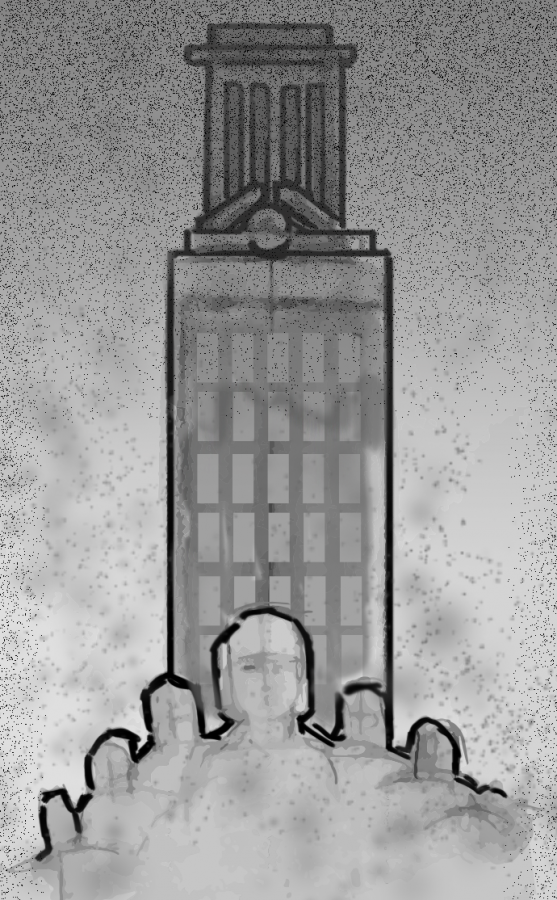How do you fell an untouchable foe? The #MeToo movement answered that question for many with the descent from grace of powerful men like Harvey Weinstein, Bill O’Reilly and Charlie Rose. However, answers for students at our university remain elusive. UT has released no plans for changing its policies regarding reporting and punishing inappropriate faculty behavior. Unclear chains of command, an environment rife with power differentials and the anonymity of a large population are still keeping many victims in the dark. What is UT doing to stop this abuse?
UT released the findings of its Cultivating Learning and Safe Environments (CLASE) study in spring 2017. It reveals that 20 percent of student respondents reported “having experienced faculty/staff-perpetrated sexist gender harassment” since their enrollment. That number is 30 percent for just graduate students. Within those numbers, 1 percent experienced “faculty/staff perpetrated sexual coercion harassment.” The perpetrators are overwhelmingly male (81 percent) and overwhelmingly faculty (64 percent) (Professor or TA). Most incidents occurred on campus (84 percent).
Unaddressed in the CLASE report is why faculty-perpetrated harassment is so prevalent yet goes largely so unnoticed. One, the chain of command is blurry. Department chairs largely oversee the academics of a department and will simply report allegations upward. Deans oversee the academics and student life of their colleges and will likewise simply report upward. Firing decisions involving tenured professors usually go up to the University President or even the Board of Regents. Even then, the grounds for firing must be solid to avoid a lawsuit or censure. What student would know what route to take to ensure the right person hears them?
Two, higher education environments are a hotbed for relationships with power differentials. This means faculty have leverage over students — grades, research positions, letters of recommendation — all things which affect futures. Reporting could be a career-ender, not just as a student at this university but as a job prospect going forward. Further is the question of who will ultimately be believed. Some faculty have resided at UT for decades. Students are transient. With whom would sympathies lie?
Finally, anonymity plays into faculty/staff harassment at UT. A large, bustling population of 50,000 makes it so that individual incidents easily go unnoticed not only by the institution but also other students and professors. A Title IX investigation takes 45–90 days to complete. Imagine that number if every incident was actually reported. The manpower for support is simply not present, scaring many students from disclosure.
UT faculty already must retake sexual harassment and abuse training courses every two years. To some, this may seem sufficient. However, the number of harassment incidents reported in CLASE implies that “develop(ing) a collaborative, robust and comprehensive faculty and staff education plan” and “implement(ing) a strategic education plan targeted for teaching assistants” will not be enough “immediate action” going forward. Training clearly has not been working. UT must make plans for implementing the other “immediate actions” and “future steps” found in CLASE.
The CLASE report called for establishing a faculty liaison within departments to serve as a Title IX deputy as well as establishing a centralized location for reporting all harassment and assault allegations. No noticeable progress has been made on these initiatives, nor have plans for “additional … research to gain greater insight into … faculty/staff harassment” been released.
CLASE lists many student-run initiatives which aim to reduce the prevalence of student sexual harassment and assault through awareness, education and active intervention. By contrast, there are very few mentions of attempts on behalf of university administration to meaningfully reduce faculty/staff-perpetrated harassment. Students must see more answers lest we organize to make them ourselves. As studies show, we’re quite good at that.
Reece is a Plan II and government junior.





















